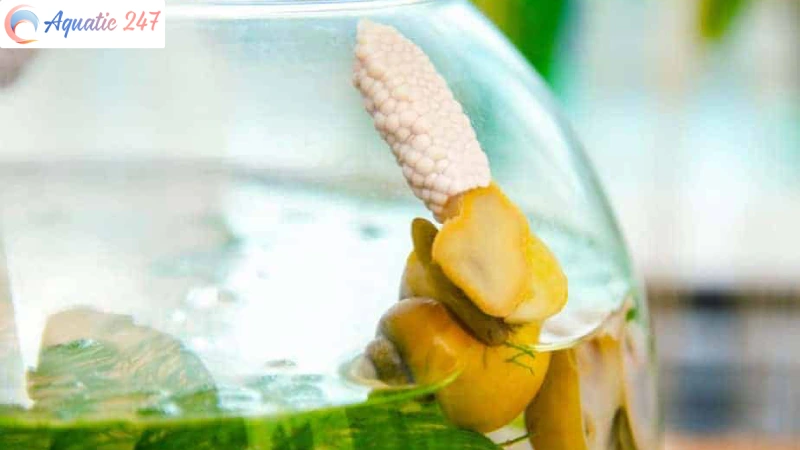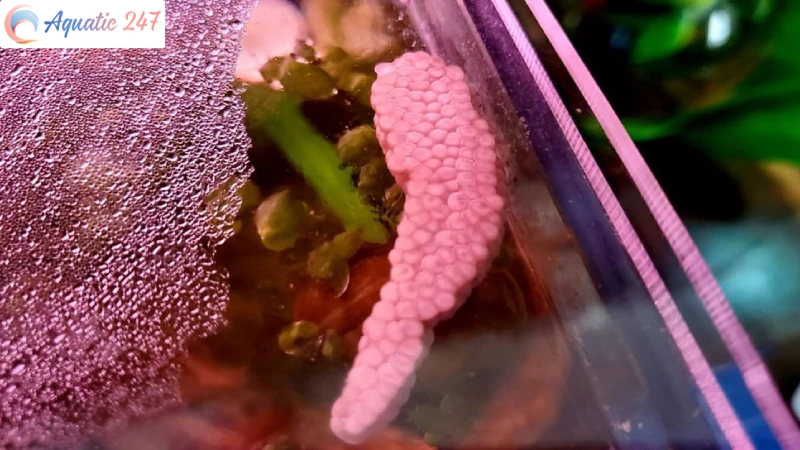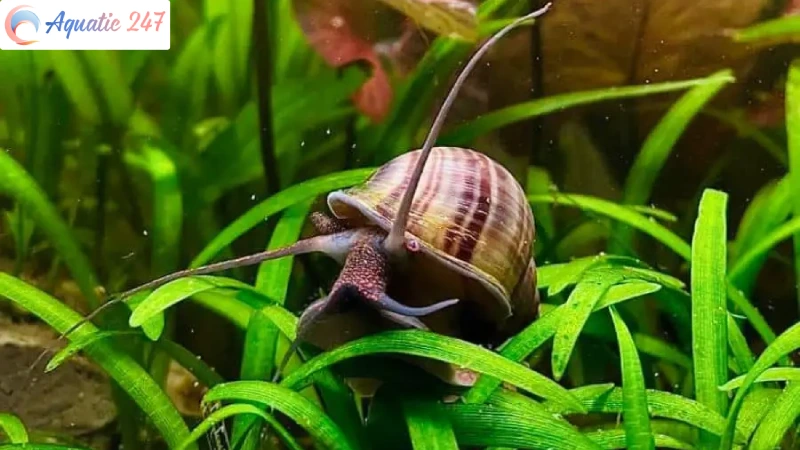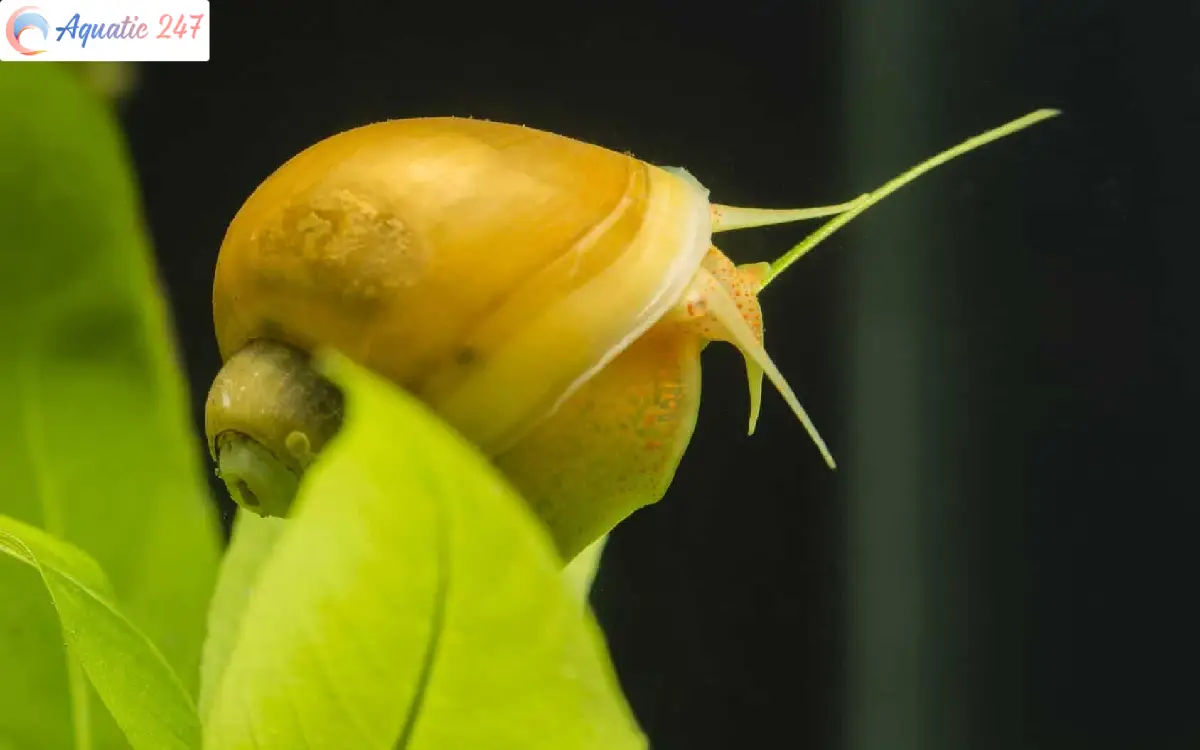Have you ever encountered infertile mystery snail eggs? What do those eggs look like? In this article, Aquatic 247 will help you learn about infertile eggs and how to identify them.
Stages of the mystery snail egg-hatching cycle
Below are the stages of the hatching cycle that indicate the fertility or infertility of the egg.
Initially, you will notice a group of pale pink or yellowish, pearl-sized eggs. If the texture is soft, you are lucky enough to see them during the first 24-48 hours.

The second comes roughly a week later. During this stage, the color will change to garnet brown, and the shell will become much harder.
For the following two weeks, you will see little to no progress, and the texture and color of the egg will remain practically the same.
In rare situations, by the third or fourth week, the clutch will have gotten slightly slimy. Furthermore, almost all eggs will turn gray with a black core.
How to tell if mystery snail eggs are fertile?
How to tell if snail eggs are fertile? We have compiled 3 simple ways that you can recognize them.
Color
Initially, you cannot determine the difference between fertile eggs and infertile eggs, so you have to wait a while to see the difference.
If the eggs are not fertile, they will not change color; they may even turn white. The most obvious way to test for egg fertility is to wait until the third week. If you do not see any changes in the color of the eggs, this is a sign of infertility.
Size
You will also notice that the size will not increase if the eggs are not fertile. Fertile eggs develop continuously; therefore, their size varies with each passing day or week.

Use a damp paper towel
For this method, you leave the eggs on a damp paper towel and wait at least two weeks. If the eggs are alive, they will leave stains on the damp paper towel; on the contrary, if there are no stains, you know your snail eggs are dead.
Can mystery snails lay eggs without a mate?
The answer is yes. However, the mystery snail egg will become infertile. You can pick them off the side of the tank and throw them away.
Mystery snails are commonly mistaken for hermaphrodites, which means they can transition between male and female, fertilize and lay eggs, and reproduce asexually or without mating. However, the males and females of the strange snail species are distinct and cannot be changed because they are unisexual.
If you notice young snails, we can confirm that the mystery snail you introduced into the tank is carrying fertilized eggs from a previous mating.
How to incubate mystery snail eggs?
We will guide you in 3 simple steps for you to refer to and implement.
Maintain good humidity
Ensure adequate humidity by using a nebulizer or an aquarium heater. The most important thing is that you have a lid, no matter which option you choose. Moisture is retained by a cover, creating a safe space for egg development.
Remove the eggs
Before attempting to reposition the clutch, wait at least 48 hours. The least harmful way to transfer eggs is to gently spin them from side to side with your fingertips until the shell splits. A razor blade is another option, although it may harm the eggs on the bottom layer. However, an egg sack can hold 50 to 100 eggs, so this isn’t an issue.
Transfer to the hatching spot
First, take a plastic box, make a few holes in the lid, and place a damp cloth in it.
Place the eggs on the foam, and then put them in a plastic box. Once the snail eggs are in the plastic container, place the container in the tank and let it float to acclimate.
Advantages:
- Yields the best results, as mystery snails have about 30–40 adults.
- The clutch keeps away potential predators like fish, shrimp, etc.
- The optimal solution is if you cannot set up a separate tank to incubate eggs.

Disadvantages:
- The cloth in the container needs to be changed daily.
- You will also have to moisten the clutch regularly.
- If you have plants living in your tank, plastic containers can block their light, affecting their growth.
How to raise baby mystery snails?
The only requirement for young mystery snails is sufficient algae. Studies have shown that if they have enough algae to eat, they are more likely to live than if forced to eat other foods, such as fishmeal.
In conclusion
Through this article, you have learned about infertile mystery snail eggs and how to recognize infertile eggs. For those who raise mysterious snails at home or scientific researchers exploring their behavior, mysterious snail eggs are still an interesting aspect, stimulating human curiosity.




